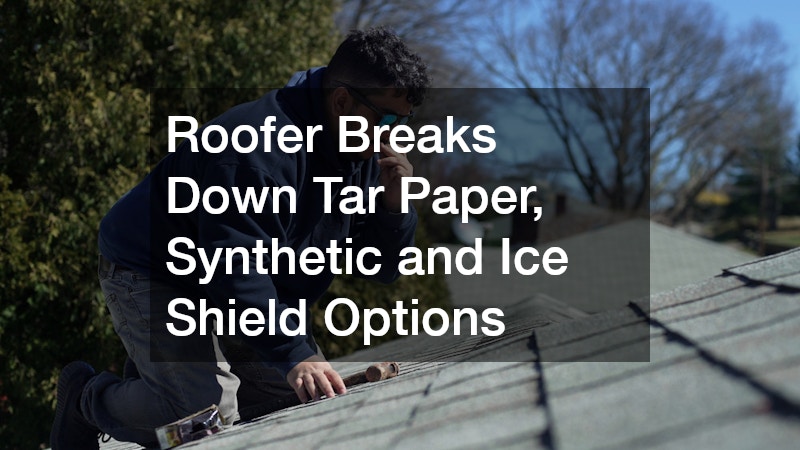What is Tar Paper and How Does it Work?
Tar paper, also known as roofing felt, is a material made from a base of organic or fiberglass, saturated with asphalt. Traditionally used in roofing projects, it serves as an underlayment layer to protect the roof deck from moisture and other elements.
When installed beneath roofing shingles, tar paper provides a secondary barrier against water infiltration. It is typically laid horizontally across the roof, shingled in a manner to direct water away from seams and laps. This helps to safeguard the home from leaks caused by rain, snow, or ice.
Despite its reliable performance, tar paper can deteriorate over time, particularly in areas exposed to intense sunlight or extreme weather conditions. Understanding its limitations and functions is crucial for homeowners considering this traditional option for their roofing projects.
Advantages of Using Synthetic Underlayment
Synthetic underlayment materials offer several advantages over traditional tar paper in terms of durability. Designed to withstand harsher weather conditions, these products can last longer and are less prone to tearing or damage during installation or from UV exposure.
Another significant benefit is moisture resistance. Synthetic underlayment helps to prevent mold and mildew growth, which can occur if water seeps into the roofing system. This property makes synthetic options increasingly popular among contractors and homeowners alike.
Furthermore, synthetic materials are often lighter and easier to handle, leading to faster installation times. Their superior slip resistance can also enhance safety for workers navigating sloped roofs during installation. The convenience of synthetic underlayment makes it an appealing choice for modern roofing projects.
What is Ice and Water Shield?
Ice and Water Shield is a specialized underlayment that combines a rubberized asphalt formulation with a protective backing. This product is specifically designed to prevent water intrusion in areas that are prone to ice dams and accumulated snow. Its unique properties contribute to superior performance in extreme conditions.
In regions where freezing temperatures frequently occur, ice and water shield is essential for protecting vulnerable roofing areas, such as gutters and valleys. It adheres directly to the roof deck and forms a continuous barrier that prevents water from seeping through, thereby avoiding potential leaks inside the home.
While ice and water shield can be more expensive than traditional underlayment options, its enhanced protection can save homeowners from costly repairs due to water damage over time. Understanding its role in preventing ice backup will help you invest wisely in roofing solutions tailored to your climate.
How to Choose the Right Underlayment for Your Roof
Choosing the right underlayment requires careful consideration of various factors including climate, roof type, and budget. Homeowners in colder regions may prioritize materials like ice and water shield to guard against potential ice dams, while those in milder climates may choose synthetic or tar paper options for their balance of performance and cost.
Additionally, consulting with professionals can provide insight into local building codes and recommendations for your specific roofing project. This information can guide your decision and ensure compliance with regulations that may require the use of specific underlayment materials in your area.
Ultimately, the goal is to select an underlayment that enhances the longevity and performance of your roofing system. Weighing the pros and cons of each option will empower homeowners and contractors to make well-informed decisions that fit their unique needs.
Each option carries its own set of benefits and challenges, and the best choice will depend on individual needs and circumstances. By considering factors like climate, budget, and the specific requirements of roofing systems, you can enhance the overall integrity of your home.
Whether you lean towards the traditional tar paper, the modern synthetic solutions, or the protective ice and water shield, informed decisions will ensure a robust and reliable roofing system for years to come.



